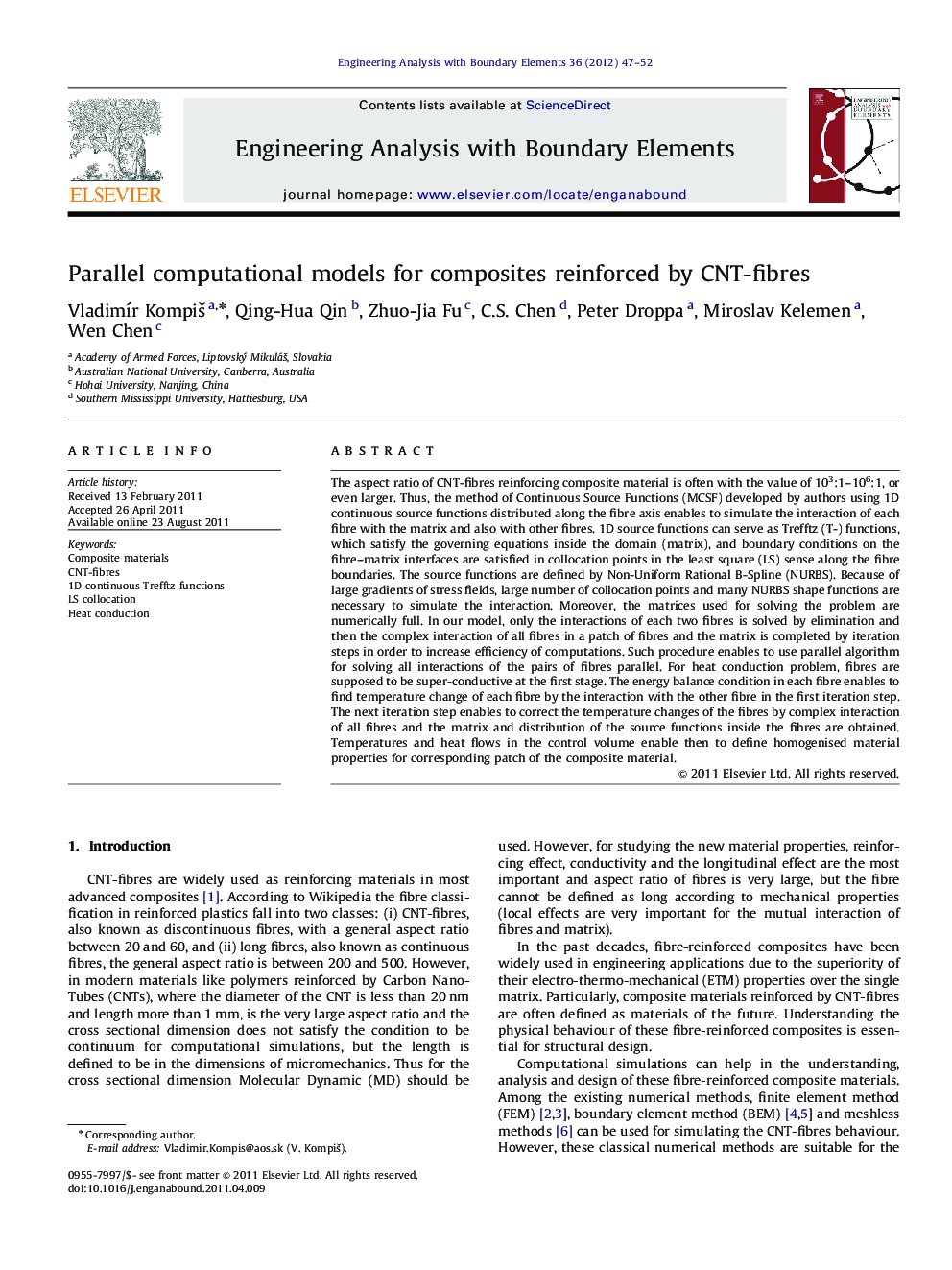| Article ID | Journal | Published Year | Pages | File Type |
|---|---|---|---|---|
| 512757 | Engineering Analysis with Boundary Elements | 2012 | 6 Pages |
The aspect ratio of CNT-fibres reinforcing composite material is often with the value of 103:1–106:1, or even larger. Thus, the method of Continuous Source Functions (MCSF) developed by authors using 1D continuous source functions distributed along the fibre axis enables to simulate the interaction of each fibre with the matrix and also with other fibres. 1D source functions can serve as Trefftz (T-) functions, which satisfy the governing equations inside the domain (matrix), and boundary conditions on the fibre–matrix interfaces are satisfied in collocation points in the least square (LS) sense along the fibre boundaries. The source functions are defined by Non-Uniform Rational B-Spline (NURBS). Because of large gradients of stress fields, large number of collocation points and many NURBS shape functions are necessary to simulate the interaction. Moreover, the matrices used for solving the problem are numerically full. In our model, only the interactions of each two fibres is solved by elimination and then the complex interaction of all fibres in a patch of fibres and the matrix is completed by iteration steps in order to increase efficiency of computations. Such procedure enables to use parallel algorithm for solving all interactions of the pairs of fibres parallel. For heat conduction problem, fibres are supposed to be super-conductive at the first stage. The energy balance condition in each fibre enables to find temperature change of each fibre by the interaction with the other fibre in the first iteration step. The next iteration step enables to correct the temperature changes of the fibres by complex interaction of all fibres and the matrix and distribution of the source functions inside the fibres are obtained. Temperatures and heat flows in the control volume enable then to define homogenised material properties for corresponding patch of the composite material.
► 1D continuous Trefftz functions were used to simulate materials reinforced by short fibres. ► Heat flow in composite material is used as an example. ► The aspect ratio of fibres can be very high. ► Iterative-elimination parallel solver is used to reduce the computational model.
